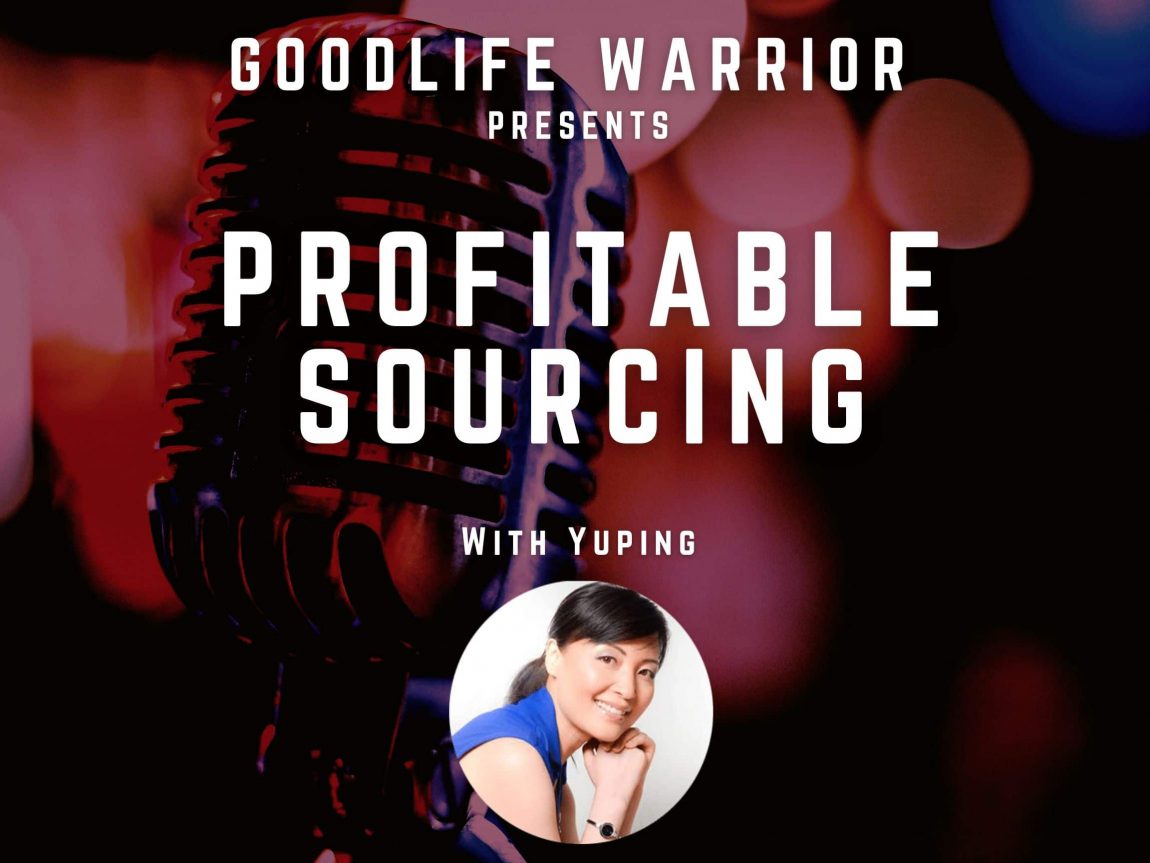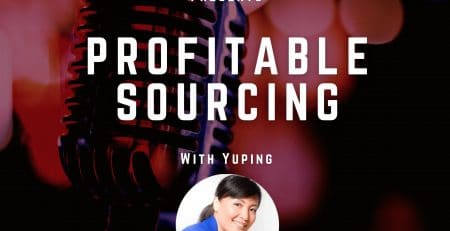This “Amazon FBA Step-By-Step Course” is a FREE gift from me to you to bring more luck and fun to your summer! 🙂 I will share everything I know to help you learn, grow and succeed in doing the Amazon FBA business. Enjoy the first episode!
[buzzsprout episode=’11294210′ player=’true’]
Where to subscribe: Apple Podcast | Google Podcasts | Spotify | Stitcher | RSS
Full Transcript:
Hello, everyone. Welcome back to the Goodlife Warrior channel. I hope your day is going well, despite all the uncertainties around the world. These uncertainties are seriously making a lot of us feeling confused and anxious about the investment decisions we need to make. Should I invest into the stock market or should I wait? Should I invest in cryptocurrency or is that too risky? How about starting my own business? How about Amazon FBA? Or should I wait? If you’re in this place going back and forth, couldn’t decide, you are not alone.
Instead of feeling frustrated, I thought, how about I create a Amazon FBA beginners course and give it to you for free so you can have a total understanding what does it take to start this business and what does it take to succeed this business before you spend thousands of dollars. This Amazon FBA beginners course is for beginners. However, I promise you, even if you have a successful Amazon FBA business, you still will benefit a lot from my tips.
This is a video series of six. From the very beginning, I’m going to teach you how to select your first product, how to get the best quote, how to get the samples, how do we issue purchase orders, how to inspect product quality, how to arrange shipping. All of that are going to be included in this six videos so you have a holistic, a grand view of this Amazon FBA business. My intention is to help you prepare yourself. At some point when you do start your Amazon FBA business, you know what it takes. So let’s begin the episode.
Number one, how to select your first product. Product selection is the first and is one of the most critical steps. The other critical step is the purchase order. How many and when, under what terms and condition you are going to seriously give money to your supplier. So for the product selection, I’m going to give you three tips. The first tip for the beginners when it comes down to the first product selection is to learn how to reverse engineering your first product cost based on your budget.
There’s no absolute right or wrong answer in this. However, if this is your first product, it is good for you to know what product cost you can afford. Is that a dollar or $20? Well, it depends on your budget. If this is your second product or the hundredth product, it doesn’t really matter. If you have unlimited resources, it doesn’t matter either. However, if you have a fixed budget, I want to risk $10,000 or I want to risk $30,000 into Amazon FBA, then there is a little bit science behind the curtain.
Let’s do a quick example. Let’s say you have $12,000 to spend. In order to reverse engineering this $12,000 into the product cost you can afford, the first thing you need to do is to divide this $12,000 by two. And now you’re getting $6,000, right? Why divide the $10,000 by two? Because you’re going to spend this $12,000 on two purchase orders. As soon as you receive the first purchase order into Amazon FBA warehouse, you are going to cut the second purchase order to your supplier so you can have more product coming into Amazon FBA when you sell through the first purchase order.
Now you’re going to divide the $6,000 by six. Why six? Six is the assumption of the total lead time. Right now, if you buy anything from your supplier shipping through ocean, including the production lead time and the shipping lead time, the total lead time is going to be around five to six months. If the lead time reduce to three, you’re going to divide the $6,000 by three. But for now, just for the sake of exercise, we’re going to divide the $6,000 by six months. That’s equals to $1,000.
Now we’re going to divide the $1,000 by 300. Why 300? This is to assume that you are going to sell this product at 10 a day, right? If it’s 10 a day, it’s going to be 300 units per month. If I’m spending a thousand dollars per month for 300 units, and what is your unit cost? We’re getting 3.30, right? So this is your unit cost. The variables in this math are the total lead time of six and the number of units. If you increase or double your monthly sales to 600 units, then the unit cost is going to be around a $1.65. The reason we’re doing this reverse engineering on product cost, it is to make sure when you are ready to cut your purchase orders to the supplier, you know exactly how much money you can afford for the first purchase order.
When you receive the products from the first purchase order and the product sells really well, you know you have the cash to buy on the second purchase order. If it doesn’t sell, then don’t waste the money on the second purchase order. There’s no point of wasting more money investing into a failing business, right? So basically, by figuring out the product cost at the very beginning before you select the first product, you are already thinking ahead, six months ahead, 12 months ahead. I hope you are understanding the value of reverse engineering the product cost at the very beginning. Don’t worry if you’re not getting the math. I’m going to try to find time to put together this Amazon FBA beginners course in a download. Be sure to watch the video description and find that download.
The second tip for the first product selection is to understand the market depth and breadth. Not the product depth and breadth. I will explain. Every product has his product life cycle from inception to growth to being obsolete. And every market has different level of maturity or saturation. When you select your first product, make sure you understand where do you stand on this market. Is this market has the depth, does this market has the breadth, and is this market pretty saturated?
Let’s just use a product as an example to understand the market breadth and depths. Let’s say your first product is a fishing product. You’re going to target on the people who love fishing. Where do you stand on this market depth? In fact, during COVID, many hobby products, that’s baking, sewing, home decor, biking, fishing, all of these hobby products market has grown tremendously. So the market depths is there.
What about the market breadth? What does that mean? Simply explained is how many different ways you can cross-sell your product. For example, if you are selling a specialty fishing hook, the fishermen who love fishing will be your target audience. But if you design a beautifully put together gift set of a fishing accessories, suddenly you can sell this gift box to the son who want to buy this as a Father’s Day gift to their father, or the wife who want to buy this gift box for their husband. So basically when you are selecting your first product, you are not only thinking about the market depth, thinking how much potential this market is going to be, how I’m going to compete within this market and get more sales. You’re also thinking about the market breadth. How do I design my product so that it will have a different keywords to allow the customers to find my product through different way of looking up the keyword.
If you’re using Helium 10 product research tool, I bet you are using reverse ASIN function to find the keywords behind a particular product to see what keywords and how much volume associated with each keyword to lead to the sales of this particular product. If you are doing product research, you’re not using Helium 10, feel free to use the discount link in the video description. It’s going to help you a lot when it comes down to determine your first product selection.
The third tip for your first product selection is the visual impact of your customization. There are many, many products on amazon.com. Many of those products can be improved. If you are the smart one, you are going to find a product to customize. However, doesn’t matter what you improve on this product, whether it’s form, fit or, function. If the improvements cannot be reflected on the image, then the customer is not going to perceive this improvements very quick. This means they’re not going to click on the same image to read the product description to find the improvements.
This means when you are selecting your first product, please keep this visual impact in your mind. Try to find a product to customize, and they will have a visual impact that will increase the customer clicks to increase the potential sales. That’s going to make it a little bit more easier for you to succeed on the first product.
So to summarize on this episode, how to select your first product. Number one, learn to reverse engineering your product cost based on your budget. This will guarantee you will have the money when you issue your first purchase order and the second purchase order. Number two, understand the market depths and breadth. Try to find a product has both. If you have the product breadth and depths, then the customer will have more ways to find your product, therefore converting more sales. Number three is to keep the visual impact of your customization in mind.
I hope you appreciate the value I provided in this episode. If you love this video, two thumbs up, leave a comment. I’ll see you in the episode number two. In the episode number two, we’re going to talk about how to get the best quote. Take care. I’ll talk to you soon.
Video Version:
[embedyt] https://youtu.be/EClyMg5gbXk[/embedyt]





